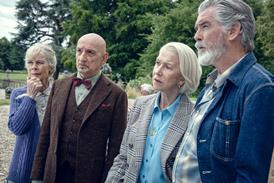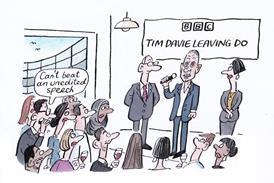The UK's DVD facilities are facing declining margins as low supermarket retail prices drive down budgets and orders from US studios become scarcer.
How much can they look to HD-DVD authoring to help them out of the slump?
The market for standard definition DVDs has matured significantly in recent years but it has not happened without a cost - specifically to the facilities market in the UK.
This summer, post house Evolutions' DVD arm fell victim to an industry downturn which last year claimed both Prime Focus' TMR and The Farm's DVD subsidiary, Squash.
The chief blame for this change of fortune has been placed on the retail price of DVDs, which has fallen drastically, in turn putting pressure on the cost of production.
'When you have the likes of Asda and Tesco selling new release titles such as Casino Royalefor £7 then everyone's margins get squeezed,' says Julian Day, managing director of DVD facility DGP.
'We facilities are under pressure to charge less but it's still the same work involved. As a result of that we've seen a lot of companies in the UK close down or retrench,' he adds.
To survive, Day believes that facilities cannot afford to rely on UK work alone. DGP has been an affiliate of Warner Bros since 2001 and work from the studio comprises around 50% of its business. 'Warners is our bedrock - you need partnerships like this. It doesn't make it rosy but it does make it easier,' he admits.
Andy Evans, managing director of Shoreditch DVD house The Pavement, notes that DVD production is simply not as creative as it used to be. 'It's lost its coolness,' he says. 'Producing a DVD for a supermarket for seven quid doesn't give you the opportunity to provide many extras - it's now very much a commodity product.'
Because it's the design and extras that The Pavement has become renowned for, Evans has had to look at other ways of doing business.
One new practice has been to offer bigger authoring and duplication companies a service which involves The Pavement creating the designs and menus and then handing this blueprint over to the bigger facility which is better set up to handle encoding, authoring and large orders.
The Pavement used this model on the DVD for the movie Hot Fuzzrecently when the director Edgar Wright requested that the DVD be produced there, while the studio wanted to bring it in-house. The blueprint method meant that everyone was happy.
Even facilities with the backing of a large US parent seem to acknowledge that DVD boom time is over. As Paul Kind, the managing director of Ascent Media's UK media services division, which encompasses its DVD facility Stream, observes: 'In the early days of DVD when studios were trying to release their back catalogue they looked to the UK to take on the overspill they couldn't manage,' he says. 'We used to do work for Disney and Paramount - but now this has all been taken back in-house.'
Subsequently Stream's strategy for standard-definition DVD production involves focusing on improving the workflow. 'We use the latest technologies and workflows in order to meet expectations in terms of price. We've got to work what we've got in a more efficient manner,' says Kind.
If the DVD market wasn't fractured enough, now two well-documented variants of high-definition DVD have emerged: Toshiba's HD-DVD format and Sony's Blu-ray.
In many ways this is a major headache for facilities wishing to pursue HD disks - the initial outlay for investing in authoring and encoding tools plus accessories has been estimated by some to set facilities back roughly £250,000 per format. On the upside, in a saturated SD market the HD format has the opportunity to offer the viewer something really unique.
Abbey Road Interactive was one of the early investors in the HD format (it offers both variants). The facility, which is part of Abbey Road Studios, recognised that some music fans are already watching live HD broadcasts of Robbie Williams concerts in perfect detail and these viewers are now going to expect the same quality from the DVDs they buy.
Abbey Road Interactive DVD producer Richard Osborn notes many other advantages that both of the HD formats are set to offer.
'The multi-angle option works far better than what was promised with SD; you also don't need to return to the menu - it just pops up as you're watching the film. The big pull, though, is web integration - the players come with an Ethernet connection so you can include computer games, web links and hidden extras.'
The fact that there are two competing formats, however, is clearly slowing down production, no matter how many companies profess to being 'format agnostic'.
There is little doubt that the story of high-definition DVD so far has centred around the format war - HD-DVD vs Blu-ray - with little mention of the benefits that high-definition disks might bring
to the viewing experience.
It's a situation that must frustrate DVD kit vendors which have to manufacture equipment for both variants.
'In the UK market the biggest hurdles we face are getting more titles to be made in HD,' observes Richard Linecar, managing director of European professional operations at Sonic Solutions. 'At the moment content owners are holding back because of the format war which is slowing down development.'
DGP, a facility with both sets of authoring equipment, recently produced the US version of the BBC's epic natural history series Planet Earthfor distributor 2Entertain.
While to date this disk has sold more than 50,000 units the facility has yet to receive the same enthusiasm from UK production companies. Says DGP's Day: 'We're trying to make it as cost effective as possible to jump in but indies are either waiting to see what happens with the formats or they're waiting for the price of production to come down.'
Ask the facilities which format they think is winning out - Blu-ray or HD-DVD - and the general consensus is that both are still serious contenders.
'Blu-ray seems to have more of the big US studios backing it but the HD-DVD camp has an edge on price - the authoring kit and the domestic players are significantly cheaper,' observes Symon Roux, managing director of DVD facility 24/7.
Soho DVD facility Eyeframe, which also produces for both formats, maintains that both camps have their fans. James Greenwall, Eyeframe's head of sales and marketing, notes: 'For feature film work we author an equal amount in both formats, but for corporate work Blu-ray may have the edge.'
In terms of units sold, format agnostic vendor Sonic Solutions says it's pretty level pegging. 'In continental Europe we've sold slightly more units of HD-DVD kit whereas the UK seems to be following the US's preference for Blu-ray,' says Linecar.
Others have decided to hedge their bets. Stanley Productions and Stream offer just Blu-ray (both do well in the corporate market, which might explain why) whereas Dare has gone down the HD-DVD route, which has a cheaper kit outlay, although the DVD burners still haven't been released yet.
However, forking out the investment on even one format is still a risk that The Pavement's Evans is not prepared to take.
He says: 'I don't think in terms of, is one going to win over the other?, but whether either is going to have any work for me. No one seems to have that much more to spend on HD than they did on SD - so why should I soak up that difference?'
Paul Kind at Stream predicts that the market for HD will not be as lucrative as SD was as the quality gap isn't as wide as the leap was from VHS to DVD. 'HD for DVD is more of an evolution than a revolution,' he says.
Besides the format war another challenge for early HD pioneers has been the learning curve. 'File sizes have been a big issue - you need to store terabytes of information and when you are running several projects in tandem you need to make sure you have enough space to make it all work,' notes Abbey Road's Osborn.
Eyeframe's Greenwall adds that both HD formats are quite different to produce for. 'The processes for HD-DVD and Blu-ray are completely different. It's like starting again from scratch if a client wants a title authored in both formats,' he says.
Another factor facilities should be prepared to take into account in the transition to HD is the different skill sets required, as 24/7's Roux warns.
'DVD authoring is relatively simple for SD but for Blu-ray and HD-DVD a Java-based programming or XML background is required. It's more of a web designer's job. You're not necessarily looking for
people with video experience in Photoshop and After Effects, you're after the IT and programming people,' he says.
The similarity between HD authoring and web design is something that some facilities are trying to exploit to their advantage. While video-on-demand (VoD), mobile TV and IPTV may seem like competing platforms, many of the encoding and authoring techniques used in DVD can be applied to these mediums.
Kind predicts that his facility will work closer with a sister facility, Atlas asset management in Wardour Street, so that they can exploit other platforms.
'We need to look at refocusing,' he says. 'DVD is not the area it was two years ago. The key skills we have at Stream could be applied in other areas. We have some fantastic design people, for example, who could work on VoD menus.'
Evans is thinking along similar lines. The Pavement is currently working on a cross-media project with interactive tele-vision channel MTV Flux and Evans says that the company will be producing more cross-platform material over the next six months.
'For the past eight years 99% of our business was DVD,' says Evans. 'In the next six months this percentage is going to be much smaller. It would be crazy for
a boutique facility like ours to assume
we could just rely on DVD because there will always be someone else who can make it cheaper.'
Case study: WolfCreek:
Facilities house:Eyeframe
Formats:Blu-ray, HD-DVD and standard definition
Client:Optimum Releasing Home Entertainment
Master format (feature):HDCAM 24p
Extras:Standard definition digibeta that includes - Director Commentary, Making of Documentary, Deleted Scenes, An Interview with John Jarratt, Teaser Trailer
Encoded/Captured:using Sonic Cinevision and Digital Rapids hardware encoders
Authored:Sonic HD Authoring systems
Graphics:After Effects, Photoshop
In brief:The look of the menus was designed to reflect the 'realistic' aspect of the film - it's based on true events and is a horror film more in the vein of The Texas Chainsaw Massacrethan lurid films such as Sawand Hostel.
'As such we gave the menus a gritty, raw feel to them, with scratches, artefacts and dulled blood splats,' explains Eyeframe's head of sales, James Greenwall.
He adds that the navigation was designed to be non-intrusive when viewing the film. Using an advanced feature of pop-up menus 'the main options animate on quickly, and then sit at the bottom of the screen leaving most of the viewing area clear', says Greenwall. For ease-of-use, all scene select thumbnails are one click away with sub-menus appearing in addition to the previous menu to avoid laborious navigating of multiple menus.
DVD Stats:
- 1 billion units of SD-DVD have been sold in the UK in the past 10 years (it took the VHS format 17 years to reach a similar level).
- 600,000 Blu-ray players will be hitting US stores this year - last year's figure was 100,000.
- Toshiba claims to have cele-
brated the HD-DVD format's first anniversary in mid-April by selling its 100,000th player. - $399 (£195) is the current entry-level price for an HD-DVD player in the US.
- $500 (£245) will buy you an entry-level Blu-ray player.
Source:www.dvd-intelligence.com


























No comments yet